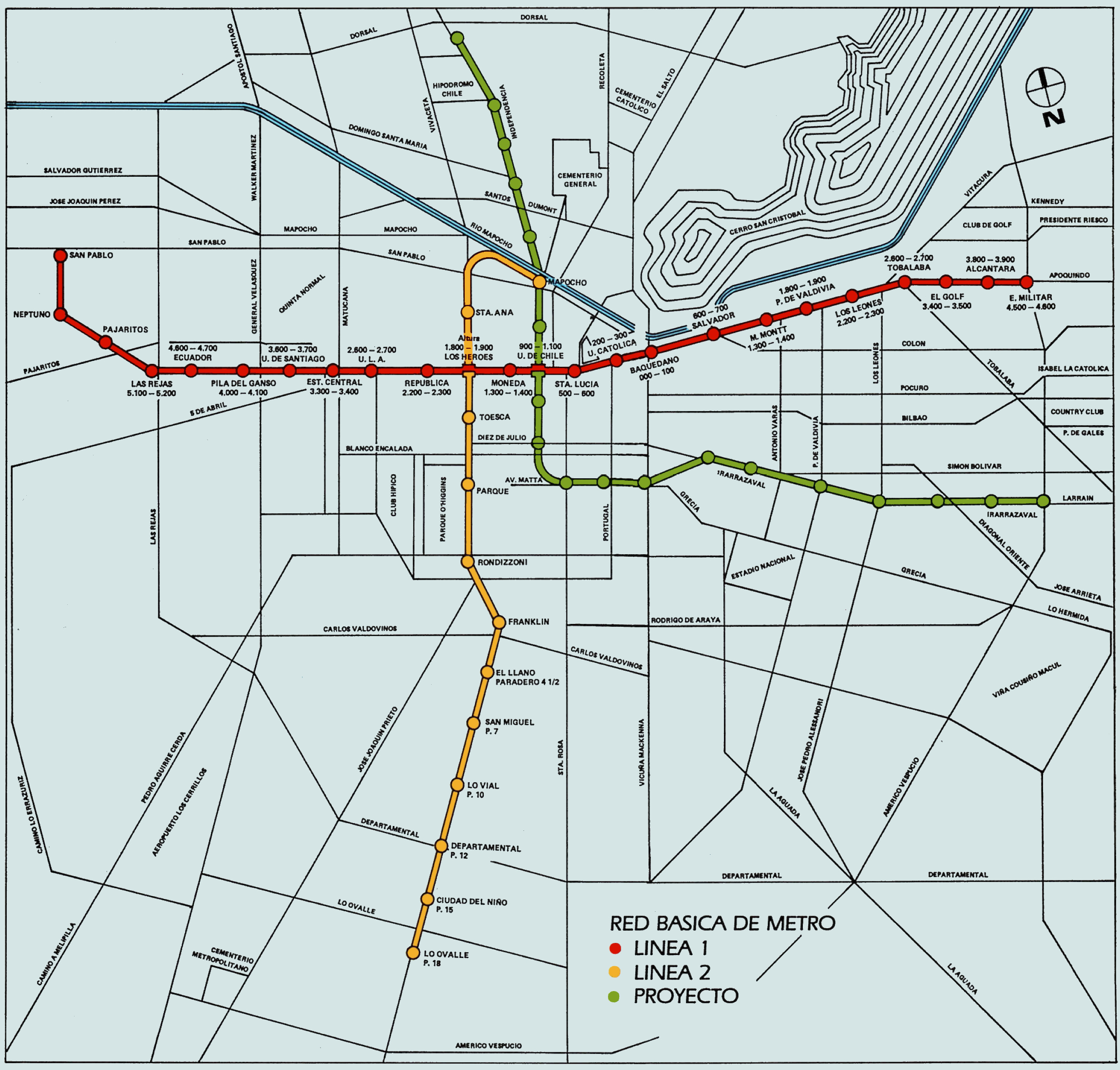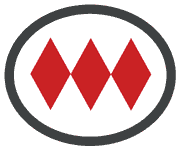|
Simón Bolívar Metro Station (Santiago)
Simón Bolívar is an underground metro station on the Line 4 of the Santiago Metro, in Santiago, Chile. It is named for the nearby Simón Bolívar Avenue, which in turn is named after Simón Bolívar Simón José Antonio de la Santísima Trinidad Bolívar y Palacios (24 July 1783 – 17 December 1830) was a Venezuelan military and political leader who led what are currently the countries of Colombia, Venezuela, Ecuador, Peru, Panama and B .... The station was opened on 30 November 2005 as part of the inaugural section of the line between Tobalaba and Grecia. References Santiago Metro stations {{chile-transport-stub ... [...More Info...] [...Related Items...] OR: [Wikipedia] [Google] [Baidu] |
List Of Santiago Metro Stations
The Santiago Metro ( es, Metro de Santiago) is a rapid transit system serving the city of Santiago, the capital of Chile. It currently consists of seven lines (numbered 1-6 and 4A), 136 stations, and of revenue route. The system is managed by the state-owned Metro S.A. and is the first and only rapid transit system in the country. The Santiago Metro carries around 2.5 million passengers daily. This figure represents an increase of more than a million passengers per day compared to 2007, when the ambitious Transantiago project was launched, in which the metro plays an important role in the public transport system serving the city. Its highest passenger peak was reached on 2 May 2019, reaching 2,951,962 passengers. In June 2017 the government announced plans for the construction of Line 7, connecting Renca in the northwest of Santiago with Vitacura in the northeast. The new line will add 26 kilometers and 19 new stations to the Metro network, running along the municipalities of Re ... [...More Info...] [...Related Items...] OR: [Wikipedia] [Google] [Baidu] |
Ossa Avenue
Ossa may refer to: Places *Ossa, Opoczno County in Łódź Voivodeship (central Poland) *Ossa, Rawa County in Łódź Voivodeship (central Poland) *Ossa, Masovian Voivodeship (east-central Poland) *Ossa, Larissa, village in Larissa regional unit, Greece *Ossa, Thessaloniki, village in Thessaloniki regional unit, Greece *Lake Ossa, Littoral Province, Cameroon *Mount Ossa (Greece), also known as Kissavos **Ossa cave *Mount Ossa (Tasmania), Tasmania, Australia *Mount Ossa National Park, Queensland, Australia *Osobłoga, (Austrian German: ), a river in the Czech Republic and Poland Other uses *Battle of Ossa, an 1863 battle near Ossa, Masovian Voivodeship *Ossa (motorcycle), a Spanish motorcycle company See also *Osa (other) *OSSA (other) Ossa may refer to: Places *Ossa, Opoczno County in Łódź Voivodeship (central Poland) *Ossa, Rawa County in Łódź Voivodeship (central Poland) *Ossa, Masovian Voivodeship (east-central Poland) *Ossa, Larissa, village in Larissa ... [...More Info...] [...Related Items...] OR: [Wikipedia] [Google] [Baidu] |
Santiago De Chile L4
Santiago (, ; ), also known as Santiago de Chile, is the capital and largest city of Chile as well as one of the largest cities in the Americas. It is the center of Chile's most densely populated region, the Santiago Metropolitan Region, whose total population is 8 million which is nearly 40% of the country's population, of which more than 6 million live in the city's continuous urban area. The city is entirely in the country's central valley. Most of the city lies between above mean sea level. Founded in 1541 by the Spanish conquistador Pedro de Valdivia, Santiago has been the capital city of Chile since colonial times. The city has a downtown core of 19th-century neoclassical architecture and winding side-streets, dotted by art deco, neo-gothic, and other styles. Santiago's cityscape is shaped by several stand-alone hills and the fast-flowing Mapocho River, lined by parks such as Parque Forestal and Balmaceda Park. The Andes Mountains can be seen from most points i ... [...More Info...] [...Related Items...] OR: [Wikipedia] [Google] [Baidu] |
Metro De Santiago
The Santiago Metro ( es, Metro de Santiago) is a rapid transit system serving the city of Santiago, the capital of Chile. It currently consists of seven lines (numbered 1-6 and 4A), 136 stations, and of revenue route. The system is managed by the state-owned Metro S.A. and is the first and only rapid transit system in the country. The Santiago Metro carries around 2.5 million passengers daily. This figure represents an increase of more than a million passengers per day compared to 2007, when the ambitious Transantiago project was launched, in which the metro plays an important role in the public transport system serving the city. Its highest passenger peak was reached on 2 May 2019, reaching 2,951,962 passengers. In June 2017 the government announced plans for the construction of Line 7, connecting Renca in the northwest of Santiago with Vitacura in the northeast. The new line will add 26 kilometers and 19 new stations to the Metro network, running along the municipalities of Re ... [...More Info...] [...Related Items...] OR: [Wikipedia] [Google] [Baidu] |
Transantiago
Red Metropolitana de Movilidad (English: ''Metropolitan Mobility Network''; named Transantiago until March 2019) is a public transport system that serves Santiago, the capital of Chile. It is considered the most ambitious transport reform undertaken by a developing country according to the World Resources Institute. The system, largely influenced by Bogotá, Colombia's TransMilenio and Curitiba, Brazil's RIT, was introduced on February 10, 2007. It standardized bus routes and eliminated redundancy of same; redundancies were commonplace in the old system, which was run by thousands of independent bus operators. The system combines local (feeder) bus lines, main bus lines and the Metro (subway) network. It includes an integrated fare system, which allows passengers to make bus-to-bus or bus-to-metro transfers for the price of one ticket, using a single contactless smart card. Transantiago's implementation was problematic, as the decreased bus fleet and the newer routes have proved i ... [...More Info...] [...Related Items...] OR: [Wikipedia] [Google] [Baidu] |
Side Platforms
A side platform (also known as a marginal platform or a single-face platform) is a platform positioned to the side of one or more railway tracks or guideways at a railway station, tram stop, or transitway. A station having dual side platforms, one for each direction of travel, is the basic design used for double-track railway lines (as opposed to, for instance, the island platform where a single platform lies between the tracks). Side platforms may result in a wider overall footprint for the station compared with an island platform where a single width of platform can be shared by riders using either track. In some stations, the two side platforms are connected by a footbridge running above and over the tracks. While a pair of side platforms is often provided on a dual-track line, a single side platform is usually sufficient for a single-track line. Layout Where the station is close to a level crossing (grade crossing) the platforms may either be on the same side of the cross ... [...More Info...] [...Related Items...] OR: [Wikipedia] [Google] [Baidu] |
Metro Station
A metro station or subway station is a station for a rapid transit system, which as a whole is usually called a "metro" or "subway". A station provides a means for passengers to purchase Train ticket, tickets, board trains, and Emergency evacuation, evacuate the system in the case of an emergency. In the United Kingdom, they are known as underground stations, most commonly used in reference to the London Underground. Location The location of a metro station is carefully planned to provide easy access to important urban facilities such as roads, commercial centres, major buildings and other Transport hub, transport nodes. Most stations are located underground, with entrances/exits leading up to ground or street level. The bulk of the station is typically positioned under land reserved for public thoroughfares or Urban park, parks. Placing the station underground reduces the outside area occupied by the station, allowing vehicles and pedestrians to continue using the ground-le ... [...More Info...] [...Related Items...] OR: [Wikipedia] [Google] [Baidu] |
Santiago Metro
The Santiago Metro ( es, Metro de Santiago) is a rapid transit system serving the city of Santiago, the capital of Chile. It currently consists of seven lines (numbered 1-6 and 4A), 136 stations, and of revenue route. The system is managed by the state-owned Metro S.A. and is the first and only rapid transit system in the country. The Santiago Metro carries around 2.5 million passengers daily. This figure represents an increase of more than a million passengers per day compared to 2007, when the ambitious Transantiago project was launched, in which the metro plays an important role in the public transport system serving the city. Its highest passenger peak was reached on 2 May 2019, reaching 2,951,962 passengers. In June 2017 the government announced plans for the construction of Line 7, connecting Renca in the northwest of Santiago with Vitacura in the northeast. The new line will add 26 kilometers and 19 new stations to the Metro network, running along the municipalities of Re ... [...More Info...] [...Related Items...] OR: [Wikipedia] [Google] [Baidu] |
Santiago
Santiago (, ; ), also known as Santiago de Chile, is the capital and largest city of Chile as well as one of the largest cities in the Americas. It is the center of Chile's most densely populated region, the Santiago Metropolitan Region, whose total population is 8 million which is nearly 40% of the country's population, of which more than 6 million live in the city's continuous urban area. The city is entirely in the country's central valley. Most of the city lies between above mean sea level. Founded in 1541 by the Spanish conquistador Pedro de Valdivia, Santiago has been the capital city of Chile since colonial times. The city has a downtown core of 19th-century neoclassical architecture and winding side-streets, dotted by art deco, neo-gothic, and other styles. Santiago's cityscape is shaped by several stand-alone hills and the fast-flowing Mapocho River, lined by parks such as Parque Forestal and Balmaceda Park. The Andes Mountains can be seen from most points ... [...More Info...] [...Related Items...] OR: [Wikipedia] [Google] [Baidu] |
Chile
Chile, officially the Republic of Chile, is a country in the western part of South America. It is the southernmost country in the world, and the closest to Antarctica, occupying a long and narrow strip of land between the Andes to the east and the Pacific Ocean to the west. Chile covers an area of , with a population of 17.5 million as of 2017. It shares land borders with Peru to the north, Bolivia to the north-east, Argentina to the east, and the Drake Passage in the far south. Chile also controls the Pacific islands of Juan Fernández, Isla Salas y Gómez, Desventuradas, and Easter Island in Oceania. It also claims about of Antarctica under the Chilean Antarctic Territory. The country's capital and largest city is Santiago, and its national language is Spanish. Spain conquered and colonized the region in the mid-16th century, replacing Inca rule, but failing to conquer the independent Mapuche who inhabited what is now south-central Chile. In 1818, after declaring in ... [...More Info...] [...Related Items...] OR: [Wikipedia] [Google] [Baidu] |
Simón Bolívar
Simón José Antonio de la Santísima Trinidad Bolívar y Palacios (24 July 1783 – 17 December 1830) was a Venezuelan military and political leader who led what are currently the countries of Colombia, Venezuela, Ecuador, Peru, Panama and Bolivia to independence from the Spanish Empire. He is known colloquially as '' El Libertador'', or the ''Liberator of America''. Simón Bolívar was born in Caracas in the Captaincy General of Venezuela into a wealthy criollo family. Before he turned ten, he lost both parents and lived in several households. Bolívar was educated abroad and lived in Spain, as was common for men of upper-class families in his day. While living in Madrid from 1800 to 1802, he was introduced to Enlightenment philosophy and met his future wife María Teresa Rodríguez del Toro y Alaysa. After returning to Venezuela, in 1803 del Toro contracted yellow fever and died. From 1803 to 1805, Bolívar embarked on a grand tour that ended in Rome, where he swore to end ... [...More Info...] [...Related Items...] OR: [Wikipedia] [Google] [Baidu] |
Tobalaba Metro Station
Tobalaba is a station on the Santiago Metro in Chile, the northern terminus of Line 4 and the closest station to the Costanera Center. The Line 1 station was opened on 22 August 1980 as part of the extension of the line from Salvador to Escuela Militar. It became an interchange station An interchange station or a transfer station is a train station for more than one railway route in a public transport system that allows passengers to change from one route to another, often without having to leave a station or pay an additional ... between Line 1 and Line 4 on 30 November 2005, when the section of Line 4 between Tobalaba and Grecia was opened, and the appearance of the station was altered. References 1980 establishments in Chile Railway stations opened in 1980 Santiago Metro stations Santiago Metro Line 1 Santiago Metro Line 4 {{chile-transport-stub ... [...More Info...] [...Related Items...] OR: [Wikipedia] [Google] [Baidu] |






